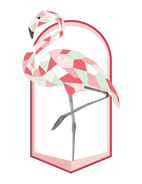|
Disclosure: This page may contain affiliate links, meaning I get a commission if you decide to make a purchase through my links, at no cost to you. Please read my disclosure for more info. 1. Traditional Education This type of home-school most resembles the traditional ways of a public classroom. It is sometimes referred to as "boxed curriculum" because the publishers "box" everything needed, such as check boxes for daily work, textbooks, workbooks, exams, answer sheets, teacher manuals, and manipulatives. The lesson plans are already organized by the day and the teacher (parent) just needs to read from the script and follow instructions. Using a "boxed" curriculum is ideal, especially when you are new to teaching. One drawback is that they tend to be the most expensive option, some ranging from $100 to $1,000 per child! If you are on a budget, you may also find these items used on Facebook Marketplace, eBay, Half-Price book stores, or libraries. Here is a list of some of the popular traditional education curriculum (the estimated costs are based on 4th grade pricing): 2. Classical Education According to welltrainedmind.com, classical education has a three part process. The first few years are the "grammar stage", where the student spends time memorizing facts. The middle school years are the "logic age" where they start applying it to their subjects. Then the high school years are the "rhetoric stage" where they used all that they have built on to express their own conclusions. While there are several curriculum publishers that follow this model, the most known is Classical Conversations.
3. Charlotte Mason Philosophy According to simplycharlottemason.com, this type of curriculum method teaches the "whole" person, not just the child's mind. Instead of using textbooks, they use living books. Children are encouraged to be outside in nature and learn about artists and composers. I encourage you to read her book to learn more about this education model. Charlotte Mason itself is not a curriculum though, but there are many that are Charlotte Mason "inspired". You can teach this method for free, but it will require some work on your part to find and put together your lessons.
4. Unit Studies Unit studies are a collection of activities that are tied to a theme. With unit studies, you are able to incorporate all subjects, such as math, science, language arts, and social studies, within the theme. This method is popular because they can be modified to each grade level and are a hands-on learning approach. This type of curriculum can range from free to fairly inexpensive. The drawback to this method is that it will require more planning and prepping on your part.
5. Computer-Based Home School Computer-Based learning is similar to the textbook method, except instead of paper books, your child's curriculum is through an online company or CD-ROM. This method works great for your visual and independent learners. This method is also a good option if you work from home and are unable to do the "teaching". The price will range from free to moderate to expensive.
6. Virtual Public School Virtual public school is not necessarily home-school. It is just public school completed at home. The parent has no input on the curriculum being used, the content being covered, or the pace of the class. The student also has to meet the state requirements, including state testing. This option is still great for many students. They offer actual teachers that are available to help. Not only is the option completely free, but some districts offer free internet, laptops and supplies. Below are the 2 options available for our school district.
7. Unschooling This is an informal learning style that promotes learner-chosen activities as the primary path to learning. If something peaks your child's interest or curiosity, then you dive into that topic. This can include research, hands-on activities, etc. It is similar to unit studies, but the child directs the learning and the topics of interest. The best part about unschooling is that the child doesn't "feel" like they are doing school, but they are learning, and most likely cover all subjects too. The drawback to this style of curriculum is that it does take effort from the parent to keep track of what is being learned and make sure to spin everything into a learning opportunity. 8. Eclectic Homeschooling This approach to homeschooling is when you do a little bit of this and a little bit of that, until you cover all subjects. Our home-school is very much eclectic. We do some things in a traditional way, some are Charlotte Mason inspired, our writing curriculum is classical, some computer-based learning, some unit studies, and a lot of unschooling. I like the freedom to choose the best part of each "approach" that best fits each of my children's learning style and personality. Each one of my boys learn different and so they use different things for every subject. Here are a few other curriculums that we have used in the past, that are not mentioned in the other sections:
Always remember that there is no ONE WAY to learn! Every child is different and their education should accommodate their individual style. Also, don't feel that you need to be married to a curriculum that you chose and started at the beginning of the year. If you find that it is not a good fit, then change it!
0 Comments
|
AuthorWrite something about yourself. No need to be fancy, just an overview. ArchivesCategories |


 RSS Feed
RSS Feed
